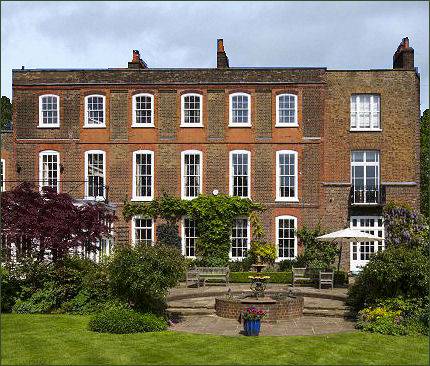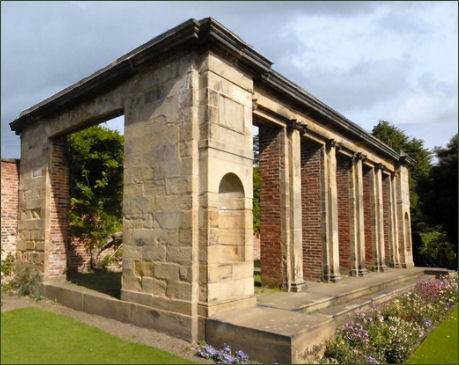Cannon Hall Museum
OS grid reference:- SE 272 083
 Cannon Hall is situated between the villages of Cawthorne and High Hoyland, around 5 miles west of Barnsley. The hall is a fine example of a grand stately home that was developed through the wealth gained in the iron and coal industry of South Yorkshire by the Spencer family in the eighteenth Century.
Cannon Hall is situated between the villages of Cawthorne and High Hoyland, around 5 miles west of Barnsley. The hall is a fine example of a grand stately home that was developed through the wealth gained in the iron and coal industry of South Yorkshire by the Spencer family in the eighteenth Century.
The site dates back at least as far as the Domesday Book which reveals that a house occupied the site in 1086. The hall acquired its name from the thirteenth century inhabitant Gilbert Canun. A gruesome murder took place there in the late fourteenth century, when the Bosville family of Ardsley owned Cannon Hall.
The Bosville's let the Hall out to a family whose name has been lost, the daughter of whom was romantically involved with a man named Lockwood. Lockwood had been involved in the murder of Sir John Elland, the High Sheriff of Yorkshire. The tenant, alarmed of the position in which he could find himself accommodating a fugitive, sent word to Bosville. Bosville's men arrived at Cannon Hall, where the fugitive was slain in a cruel and violent manner.
The estate was purchased by the Spencer family in 1660, the family came to Yorkshire from Montgomeryshire in the Welsh borders. The house was rebuilt by John Spencer at the start of the eighteenth century. Spencer was a friend of Charles II and had been pardoned by the king when he was held in York prison on manslaughter charges.
 The house was later enlarged and the wings added in 1764-67 by the Georgian architect, John Carr. The Hall and Estate were sold to Barnsley Council in 1951 by Elizabeth Spencer. Since then the Estate has been run by the council as a tourist attraction.
The house was later enlarged and the wings added in 1764-67 by the Georgian architect, John Carr. The Hall and Estate were sold to Barnsley Council in 1951 by Elizabeth Spencer. Since then the Estate has been run by the council as a tourist attraction.
The hall now houses a museum and contains outstanding ceramics and glassware. The are also fine furniture and paintings on display. The Museum houses the Regimental Museum of the 13th/18th Royal Hussars (Queen Mary's Own) and the Light Dragoons and includes displays on the part the Regiment played in famous battles including the Charge of the Light Brigade.
The Cottage Garden at Cannon Hall is a walled Georgian Garden which has been restored to show the working gardens that would have served the Hall during the Georgian and Victorian periods. It is thought to have been established around 1699, soon after the central first floor part of the main house was built by the Spencer family.
Part of the Cannon Hall Gardens were landscaped into a Fairytale folly for the children to play in. The Fairyland area was laid out in the late nineteenth Century by Sir Walter Spencer-Stanhope using stone arches form the Cawthorne and Silkstone churches. It features winding paths, fish ponds, stands of Yew trees and a stream with stone bridge
The hall is set in Cannon Hall Country Park or Cawthorne Park, which includes sweeping grasslands, secret follies, woodlands, a stream a lake and waterfalls. Cannon Hall Farm is not directly affiliated to Cannon Hall Museum, it is one of the best farm attractions in the country with a variety of animals that can be petted and fed. It includes Sheep, pigs, cows, donkeys, Shetland ponies, Lllamas, rabbits and Guinea pigs amongst others.
Entry to the grounds and museum is free. There is a charge for the car park.
